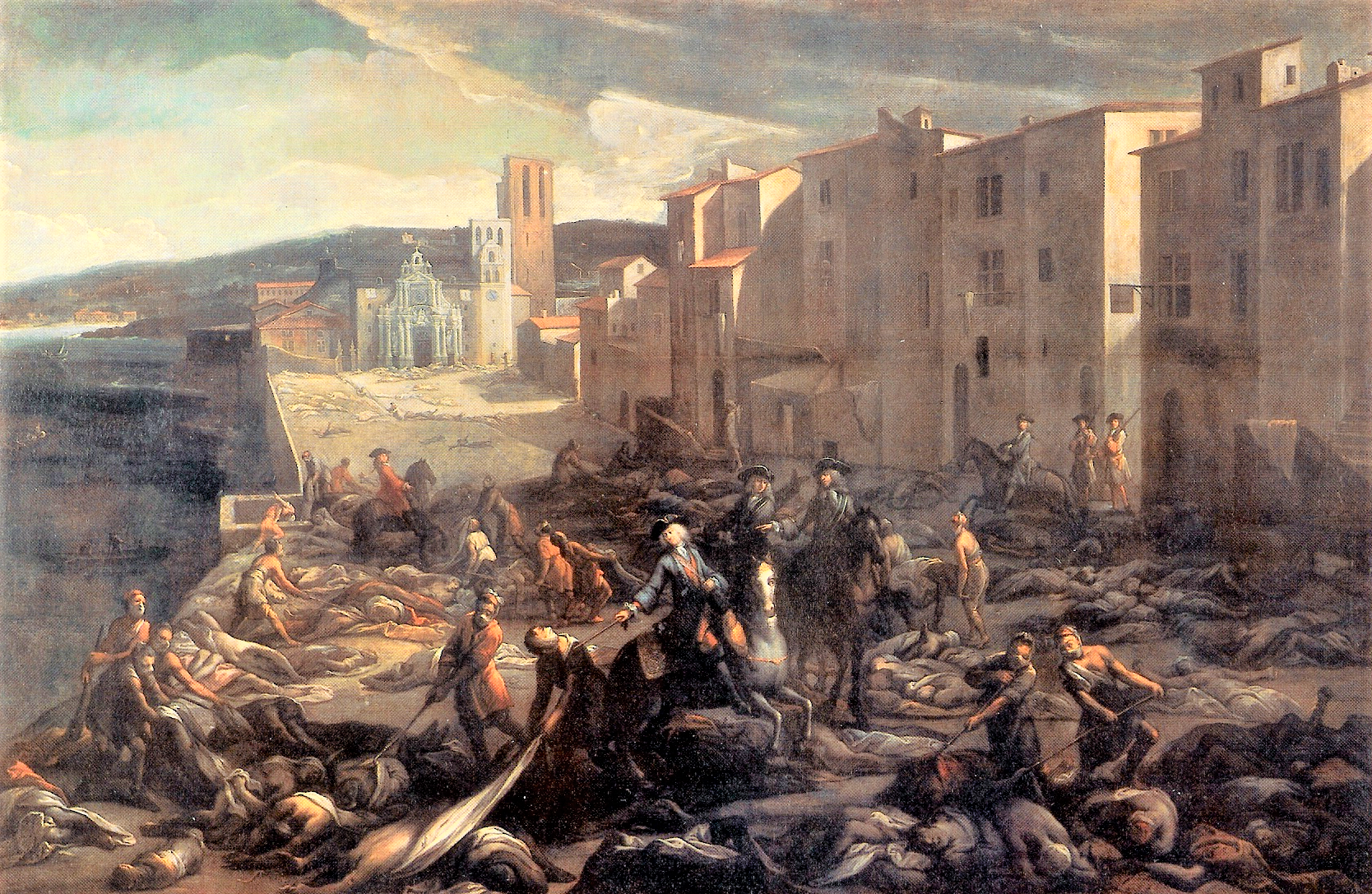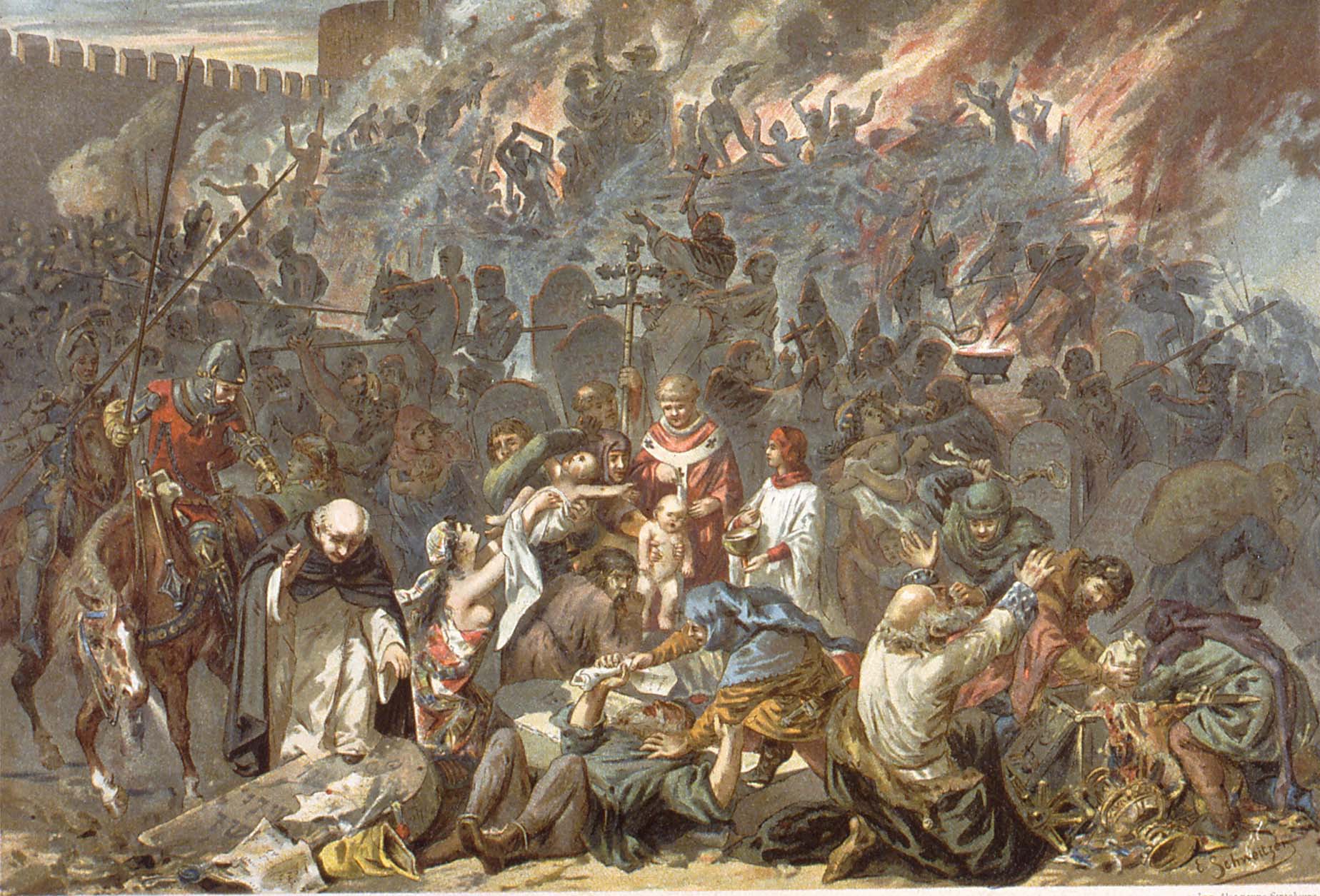It affected everyone – in town and in countryside, young and old, although in later decades there was a, let's say, specialisation in terms that it sometimes hit children, or it sometimes concentrated in cities. It is absolutely impossible for us to imagine what it was like, that sort of loss. We are now experiencing COVID-19 and it's appalling for us, but, of course, the mortality is literally nothing in comparison to what passed in those years of the world.
The Black Death: Society under pressure
Professor of Medieval and Early Modern History
- The Black Death reached Europe in 1347. It returned practically every decade for the next 200 years or so, and continued into the 16th and 17th centuries.
- The most dramatic effect was the demographic effect and its economic meaning, that people died and working hands became scarce.
- In terms of understanding the impact of a calamity, we always have to think in several temporalities: the short term, the middle term and the long term.
Arriving in Europe
The Black Death reached Europe in 1347. It’s common to talk about the period between 1347 to 1351, but that's just the first visitation of the terrible plague. It then returned practically every decade for the next 200 years or so, and continued thereafter in the 16th and 17th centuries. In those areas where it was really hard, it could diminish the population by a third or even a half. Those are parts of Italy, parts of France, parts of England. Central Europe and northern Europe experienced it a bit later, and not so badly.

Scene of the plague of 1720 at La Tourette (Marseille). Wikimedia Commons. Public domain.
Everything was disrupted
The frustrating thing about studying the Black Death is that actually we have, increasingly, very good numbers about how many died, but we have, strangely, very few insights on how people coped. What were the levels of anxiety? A few chroniclers describe the plague as one that meant that fathers didn't recognise sons and mothers, didn’t recognise their children, that everyone went for their own and didn't care for others. Other sources show heroic signs of care and compassion. So, it is extremely difficult to look back and to assess the feeling at the time, but we know that everything was disrupted. Every service one could count on – doctors, priests, farm workers to collect the harvest, people to transfer food from the countryside into cities. Everything was disrupted.
Short-term consequences
In the very short term, all aspects of life failed people: services, the supply of food, and their local parish priest probably died. We know of many artists and writers who, abruptly, no longer appear after 1348 or 1349. That must have meant that people also died because they couldn't get food, people also died because they were not taken care of. So, there are all these different types of calamities coming together.
The immediate reaction of those in power was to try and stabilise, to try and make everything go away. Where they could, they legislated to try to force people to stay where they were and not to go elsewhere, where they could get better salaries. The most dramatic effect for the economy – and everything is related to the economy – was that with fewer working hands, those who could offer labour could name their price. So, there was tremendous instability.
The most dramatic effect
The most dramatic effect was the demographic effect and its economic meaning, that people died and working hands became scarce. So those who could offer labour in country or in town could earn good wages. This trend did not stop – it continued well into the early 16th century. So, in the long term, the effect of the plague and its many visitations was to raise the wages of working people. And that's probably true. What it also meant was that those who owned land, or workshops, or hired people, obviously suffered a hit: they had to pay more of their profits to those who worked for them. So, they tried to find ways of remedying that loss. People, for example, stopped growing crops in fields and rather turned them into pasture. The real long-term changes in terms of agriculture, in terms of investment, were seeking out technologies that would mean that those who were in a position to invest did not depend so much on the rising cost of labour.
Persecuting Jewish communities
The anxiety and the pain that the first visitation of the plague, that of the 1340s, also caused some Europeans – and very often Europeans who were in positions of governance – to try to scapegoat. As is often the case in European history in that period, it's the Jews who were found to be the culprits, and a set of very nasty rumours circulated, particularly in 1348 and 1349, in the Holy Roman Empire in France, that Jews had poisoned the wells, that they had caused the mortality. It didn't matter that the Pope repeatedly issued letters saying that these rumours made no sense, that Jews didn’t need to kill Christians, and that Jews themselves were dying.

Illustration from 1894 depicting the Strasbourg pogrom (massacre of the city's Jewish inhabitants) on February 14, 1349. Wikimedia Commons. Public Domain.
Hundreds of communities were destroyed, or people were forced to go into exile, became refugees and, strangely, often then returned a few years later to their erstwhile communities. So, there was also that terrible explosion of suspicion and violence in a situation that was appalling in terms of people's loss and dislocation.
New types of Christian imagining
The religious reaction to the Black Death is very much within the framework of what already existed, but obviously with new valences – there is a lot more writing about death. There are a lot more handbooks about how to prepare for a good death. This becomes a trend that continues for the next centuries. Some art historians have identified new types of depiction of the passing of life: the weakness of the body, describing the body in very graphic ways as something that is passing, that is rotting, in order to remind people that what really matters is life after death.
But Christianity was already invested in and provided for a constant conversation between the living and the dead. There were just so many new dead to pray for. Some confraternities, some religious societies in Cambridge had so many dead brothers and sisters to commemorate after the Black Death that they decided to innovate, to create a Corpus Christi college in order to be sure that they may die and all members of society might die, but the college will continue as an institution and continue to provide that commemorative prayer that all Christians want – prayer while they're in purgatory.
So, what was already provided in the Christian system was used in new ways, with new types of imagining of the need to commemorate so many more people who died and often died without confession, without doing penance – that is, in a state of sin. That was obviously worrying for people about their loved ones who had perished.
Enjoying the here and now

Photo by Jacob Beran.
Although the difference between the Black Death in terms of its scale and its repeated occurrence is obviously not something that we are experiencing now, there is something, nonetheless, that arises from thinking of these two experiences together. That is to say that whatever is implicit in society – forms of hate, forms of love, forms of affinity – will be very strongly displayed under the pressure that the pandemic causes.
Also, like these medieval people who spoke about the fact that death might take you at any moment, be prepared, I’d like to say, in a secular tone and without being at all morbid, that we should cherish our relationships, our commitments and the beautiful things about life that we can enjoy in the here and now. We live much longer lives, and it's nothing like the Black Death, but the sense that we often forget what is precious as we go about our business, I think that is very true of our lives as well.
Thinking in temporalities
The Black Death shows us societies under extreme pressure, and it also shows us that in terms of understanding the impact of a calamity, we always have to think in several temporalities: the short term, what we do immediately just to cope. The middle term, when some of the immediate consequences will be translated into consequences, and the long term. We need to always have different scopes of thinking, of provision and judgment, and perhaps also different types of people to reflect at every one of those stages. That may mean doctors and scientists who guide us through the acute stages, it may mean civil servants who plan for aftermaths, but it may also mean our philosophers, historians or artists who try to figure out what we have been through, how it has changed us and how we prepare for the next challenge.
Discover more about
the Black Death
Rubin, M. (2006). The Hollow Crown: A History of Britain in the Late Middle Ages. Penguin.
Rubin, M. (2020). Cities of Strangers: Making Lives in Medieval Europe. Cambridge University Press.